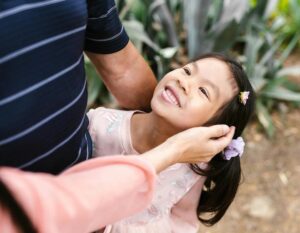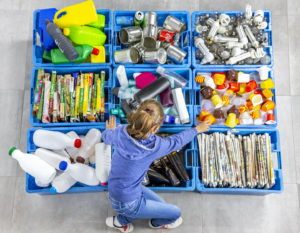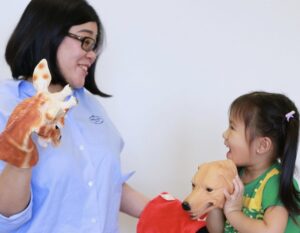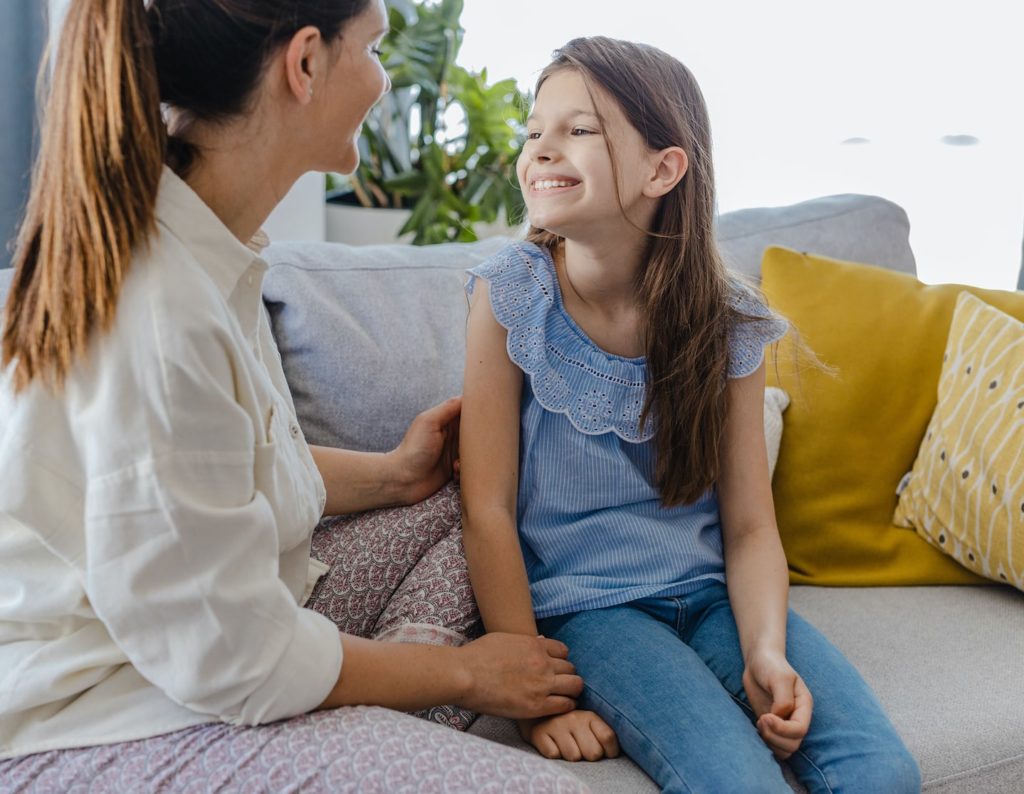
Our guide to periods discusses how and when to talk about periods with your child, best period products for tweens, and why parents should be talking to their sons about periods too!
When is the ‘right’ time to talk to your kids about periods? And where do you start? It doesn’t have to be an awkward conversation! Here’s our completely non-scary guide on everything you need to know about periods in tweens and teens.
Jump to:
How and when to talk to kids about periods
When to expect the first period? Signs to watch for
What’s the best period product for your tween?
How to get a “period ready kit” ready
PMS, heavy periods and moods during the teenage years
How and when to talk about periods with kids
We want our kids to grow up comfortable and confident in their bodies and creating a positive conversation around periods is a big part of that. Many of us may have grown up talking about our menstrual cycle in hushed tones with our girlfriends or hiding menstrual products up our sleeve when we go to the bathroom. So it’s normal to feel a bit nervous when you first start talking about periods with your kids.
Read More: Why I Had Early Conversations About Puberty, Periods & Sex with My Kids
The best thing to remember is we shouldn’t be building up to just one. big. talk. with our tween about periods and then we are done. It’s all about those small, relaxed mini conversations over a number of years which makes your kid feel comfortable talking to you about periods. Ideally, we should talk about periods to kids, both boys and girls, way before the tween or teenage years to just normalise what a period is and show there’s no shame attached.
Examples may be when you go shopping together you could buy your menstrual products and chat about the selection in the store. Or when your kid, inevitably, walks in on you in the bathroom or when you’re getting changed and they notice you’ve got your period you could say “Yes, mummy is on her period, it happens every month or so”.
When we want our kids to have a good experience with their period, we also need to reflect on our own relationship with our period. How do you speak about your period and your body around your kids? Kids are constantly watching and we need to, try at least, to model a positive relationship and use language that can make the experience seem one to look forward to, rather than dread.
Discussing periods with your younger child doesn’t need to involve any mention of sex. You can simply say something like “Every month my body makes an egg which can become a baby and my womb gets ready by making a soft lining for that baby. When I don’t get pregnant my body cleans out the womb and that’s what my period is.”
Read More: How Do You Talk to Kids About Sex in an Age Appropriate Way?
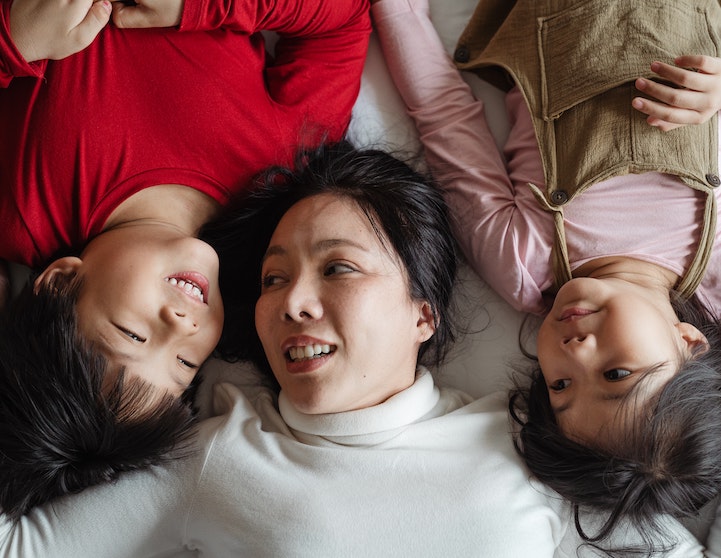
Involve boys in the conversation about periods
Many people are keen to talk about periods with their daughters, but are reluctant to mention anything to their sons. This is a shame as our sons are going to grow up to be a friend, husband or colleague of people who have periods. They deserve to know what happens every month for almost 40 years for 50% of the population! Our sons being informed about periods and what happens during our menstrual cycle will help reduce the stigma and shame which surrounds it. It also allows them to fully understand and support those in their life who have periods.
When to expect the first period? Signs to watch for
Our first period is called menarche (pronounced “men-arch”) and while the average age is around 12-13, it can come anytime from 8-16 years old. We cannot predict exactly when menarche will happen but our bodies give us clues that we can look out for:
1. Breasts development: Breasts develop around 1-3 yrs before menarche. The breast buds are often one of the first signs of puberty for tweens and they can start to grow anytime from the age of 8. The breast buds may feel tingling, aching or itching which is totally normal as the breast grows.
2. Hair growth: This often starts with hair on the arms and legs getting thicker and darker, followed by hair growth in the pubic area and underarms. This hair is fine at first and then becomes thicker and coarser.
3. Growth spurt: In the year before menarche many tweens grow 4 inches or 10 centimeters. During puberty their body will begin to build up fat, particularly in the breasts and around the hips and thighs, which is totally healthy.
4. Hair and skin become oilier, with small facial breakouts, as well as more sweating.
5. Cervical fluid: Your tween may notice white or yellow stains in their underwear. This starts 6 months to 2 years before menarche. In the few weeks leading up to the first period this fluid can become thicker and more like egg white.
Remember though, that all menstruators are different, so these are just general guidelines.
What’s the best period product for your tween?
There are lots of period products on the market so spend some time deciding which is best for your tween. As a summary we have external period products – period pads (both washable and disposable) and washable period pants. Then there are the internal products – disposable tampons, with or without applicator (there are even reusable tampon applicators now), and then washable menstrual cups and discs. If your tween is just starting out they may find internal products uncomfortable and tricky to insert though tampons come in different sizes so these may be easiest to start with.
I am a huge range of reusable period products and these are really popular with younger people due to these 3 brilliant features: they avoid the horrific toxins and plastics in leading brand disposable products which can contribute to period issues; are the better choice for the environment; and save you money in the long term.
Most tweens find using a mix of washable reusable and disposable products easiest when they start their period, with menstrual pads being their go-to. Some people recommend that your tween gauges how often they need to change their menstrual pad, perhaps for a few cycles, before using period pants. There should definitely not be any pressure on tweens to use internal products until they feel comfortable.
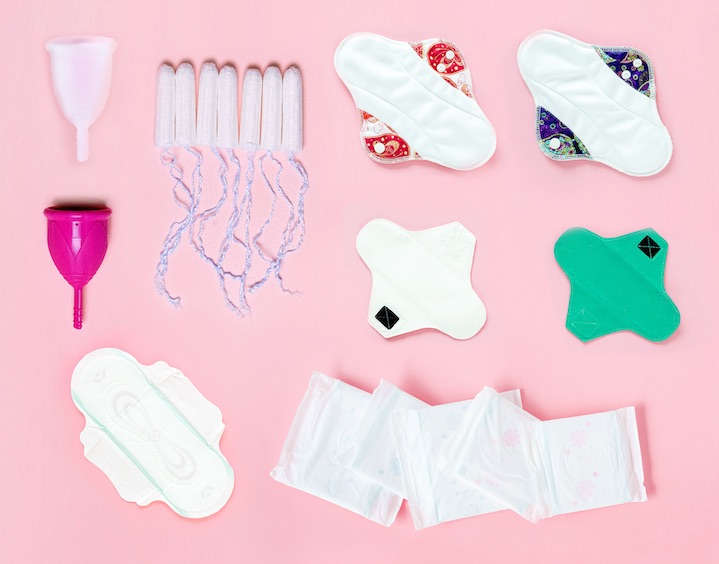
Let’s look at period products in detail:
External period products:
Washable pads: Made with super soft and comfortable material. No more itchy, plastic from disposable pads. There are also lots of pretty designs to choose from. Washable pads are made all over the world so check out what is being made locally to you and support local businesses where you can. Washable pads should last for around 3 years and how many you need really depends on how heavy your flow is and how long your period usually lasts. The options range from panty liner, medium flow and heavy/night flow with increasing sizes and thickness.
Period Pants: The latest addition to the period product world are period pants, which everyone raves about. Basically the pants have a super absorbent gusset made up of many layers. The middle layers absorb and lock-in the blood, whilst the outer, moisture-wicking layers keep you feeling dry. Depending on your flow you can wear the pants for up to 8 hours and up to 20ml, although this varies depending on brand and style.
You may be wondering, do period pads and pants smell? With disposable pads some blood will often stay sitting on the surface of the pad and this can lead to odour. Modern washable pads are made with breathable fabrics which allow moisture to evaporate. The less moisture, the less bacteria, which is what causes odour. Now with washable period pants they will fully absorb the moisture so there should be no odour at all. After use, give them a quick rinse in cold water until the water runs clean. You can then wash as normal with the rest of your laundry, but please don’t use fabric conditioner. Fabric conditioner can reduce their absorbency. Then air dry them outside on the line or indoors on an airer. Do not use a tumble drier! If you need to change while out and about just put in a waterproof bag and bring home to care for as above.
Internal period products:
Disposable tampons are inserted into the vagina where they gently expand to absorb menstrual blood and the vagina’s natural fluid. They can be convenient for those who want a disposable product so they can swim and avoid any odours from disposable menstrual pads. The downside is they shouldn’t be used overnight, they can be uncomfortable to remove if they are dry and not fully soaked, also there is a small risk of toxic shock syndrome when using tampons. There are different size tampons so look for smaller ones for teens.
Menstrual cups: silicon grade soft flexible ‘cups’ that are inserted into the vagina and hold up to 3 tampons worth. These can be left in for up to 12 hours, although it’s recommended you empty them every 4-8 hours. There is a huge range of menstrual cups to choose from and I love the Put A Cup In It website which helps you compare the different options and even take a quiz to find out which one suits you best.
Menstrual discs: internal products that don’t use suction unlike menstrual cups and instead use your anatomy to stay in place. There are also disposable brands of discs, in case people want to try them out before making the switch to reusable menstrual discs.
Period product brands to note included Natracare (non-toxic, plastic-free disposable period products) available from iherb or Redmart Quinbi (menstrual pads and cups made in Singapore), ilo (organic cotton tampons and pads on subscription), Ruby Love and ModiBodi (teen-friendly period underwear), LUÜNA Naturals (organic cotton tampons, pads, period cups promo code here), The Period Co (for reusable period products), Freedom Cups (social enterprise selling menstrual cups with a buy 1, give 1 policy).
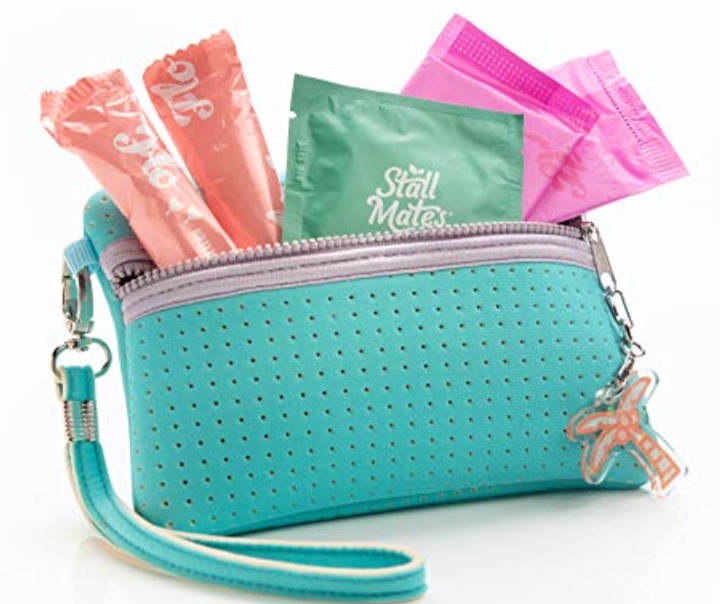
Get a “period ready kit” for your tween
As periods can start any time it is a great idea to prepare a “period ready kit” to keep in your tween’s school bag or when they stay overnight at a friend’s house. You can buy a ready-made pack or very easily put together your own with:
- A washable zip bag
- Some disposable pads
- Small pack of wet wipes
- Fresh underwear
- A small treat like a lip balm or some sweets
Get the pack ready together with your tween, asking them to pick the design of the bag perhaps. This can be a great way to continue the conversation about periods and normalise the whole experience.
PMS, heavy periods and moods during the teenage years
You may remember your period being unpredictable for the first few years and often heavy too. Here’s the reason for that. Every menstrual cycle our brain and ovaries are in a conversation, and it’s this dialogue that determines if we ovulate. As adults, this conversation is well established. So every cycle our body knows what to do – recruit follicles (which produce oestrogen) and ovulate (which means we produce progesterone). Around 2 weeks after we ovulate our period arrives. Then the whole cycle repeats. For the first few years after your first period, and up to the first 5-7yrs, your body is still establishing that conversation between the brain and the ovaries and the chit chat isn’t always smooth and regular. This causes irregular cycles, heavy periods and PMS symptoms like mood swings and sore boobs.
It’s good to know what to expect in the first few years when tweens start their period:
- Light flow for the first several months when their periods start
- Cycle may be anywhere between 21 and 45 days long and cycle length may change month to month
- Heavy and irregular periods are common during the first 2 years due to erratic ovulation while that brain/ovary conversation is getting established.
Ways to help ease kids’ period pain and cramps
Period pain has been, sadly, normalised by our society. Although a small amount of cramping is normal just before and on your period, debilitating period pain which requires more than 1 painkiller per period, wakes you up at night or stops you doing your usual things is NOT NORMAL! (Please tell everyone you know that important fact).
There are 2 types of period pain (the medical term is dysmenorrhea). Primary dysmenorrhea is pain only related to your period and secondary dysmenorrhea which is caused by a medical condition like endometriosis, adenomyosis, fibroids or ovarian cysts. So aside from these conditions, why do we get primary dysmenorrhea and feel pain during our period or have period cramps?
It’s likely due to inflammation in the body. Some people find taking ibuprofen or aspirin, help their period pains. They definitely do help as they suppress the production of prostaglandins which may be too high, however these drugs are associated with a whole host of negative side effects (including disturbing our bodies ability to ovulate!). For these reasons, it’s important to explore other ways than just painkillers to reduce this inflammation in our bodies.
My 3 favourite easy things to try in order to ease period pain are:
1. Limit or avoid dairy, sugar and alcohol in the 2 weeks before your period (dairy is the most important of that trio)
2. Switch to non-toxic period products – as mentioned above, most leading brand disposable period products are full of toxins which can contribute to period issues.
3. See a bodyworker to address any physical alignment issues which can be contributing to the pain. Arvigo® self-care massage can really help ovulation pain, period pain and bloating.
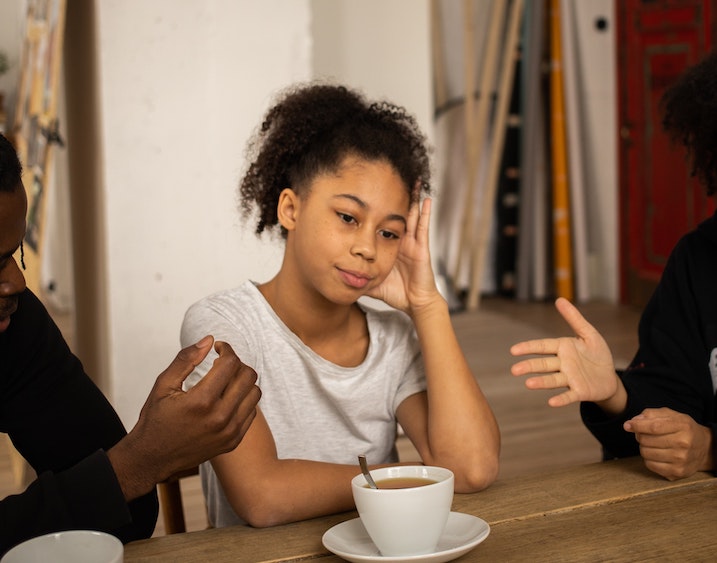
When period woes need more help
While it takes some years for our periods to regulate, we need to remember that excessively heavy periods, excruciating pain, periods missing for many months, is not normal. Also if after the first few years their cycle is shorter than 21 days or longer than 45 days, this needs addressing. We need to consider if there’s anything in the teen’s diet or lifestyle that we can improve. A bad diet and high-stress levels really screw with our periods and moods and this applies to teenagers too! So in the workshops I run and working one on one with teenagers and their parents I share loads of ideas to help them to have healthy periods and I wanted to share with you the 3 things I start with:
Firstly sleep, we need good sleep for good hormones, mental clarity, and for brain growth and development. During the teenage years the brain is undergoing massive changes and we need to support that with good quality sleep.
Second thing is pooping. We need healthy daily bowel movements and for that we need to ensure that the teenager is eating well with plenty of veggies. I’m talking half of your plate for every meal should be veggies. That’s not always possible every mealtime but that’s what we should aim for.
The third foundational pillar is joy. For balanced hormones we need to feel safe. When our body feels under threat our brain can delay or switch off ovulation which can cause missing periods or heavy periods, mood swings, PMS, sore boobs.
There’s a misconception that humans are supposed to be happy all the time, and that’s not the aim. We are supposed to feel a range of emotions and within that we need to regularly experience fun and joy. Often we don’t prioritise that and for teenagers their school work commitments and the pressure of online life can be huge stresses and we need to teach them ways to calm their nervous system and find joy every day. Now if after 2-3 months of really working on their sleep, helping their digestion by upping their veggies and supporting their mental health so there is more joy and less stress, and the periods or mood swings haven’t improved, you need to see a doctor.
Beware of the pill to regular periods!
If you do see a doctor to help with hormonal issues, please don’t accept the pill to “regulate” their period or fix acne. Most hormonal contraceptives switch off the communication between our brain and our ovaries. Without regular ovulation we are missing out on vital hormones to support our whole health. We also know that the use of hormonal contraception during teenage years is associated with a subsequent diagnosis of depression and use of antidepressants. [source ]
The pill can make periods easier for a time, give them a much needed break from the monthly pain, but it is a short-term plaster and it’s important to address the underlying issues causing the period pain or teenage acne.
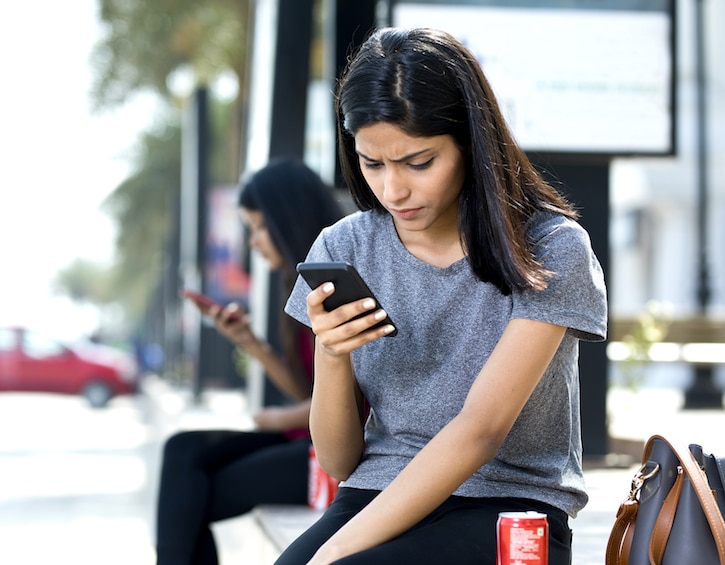
Dealing with the emotional rollercoaster of puberty
The highs and lows of the tween and teen years can not be underestimated. It can be particularly interesting as we are going through our own second puberty – perimenopause – when our PMS may also be in full force at times!
Giving your tween language to express themselves about how they are feeling so the rest of the household can know where they are at, can be hugely helpful for everyone. Perhaps create a dial to put on the fridge where they can indicate how they are feeling that day. It’s really important that we also lead by example on this. Sharing with them when you are having a hard day, or feeling overwhelmed and need some more space. We can also suggest ways they can channel their feelings, like in a daily gratitude journal or using up energy dancing to loud music in their room.
One of the reasons our tween may have PMS issues is due to irregular ovulation which should settle after the first few years, once that brain/ovary conversation is all set. But if mood issues are persistent the ideas I shared above should help, as well as addressing gut health. If things don’t improve after 2-3 months of making consistent changes, do work with a healthcare practitioner to get support.
A final word on the cyclic nature of periods
While we know, at least vaguely, about the biology that causes a period and so feel able to share that with our kids, it’s equally important that we talk about our cyclical nature. I appreciate this description may be new to many of us (I only learnt it myself in my late 30s) but as a brief summary, due to our changing hormones, it’s normal for our energy and mood to change each week of our menstrual cycle. We may be more chatty and extrovert around when you ovulate, and then more introspective, quieter nearer to when your period comes. Being cyclical also affects how hard we can exercise, as well as how much food and sleep we need each week. Our hormones are not just about making babies and our monthly periods!
Sharing this with our children prepares them for when they start their period. They will know it’s completely normal and expected to feel different during their cycle and be prepared for when their emotions shift and their hunger soars. We often think we are crazy for feeling different each week, while in fact we are simply cyclical! It is more important than ever for kids to have this information, as they go through their teenage years. We know the sad stats of the higher rates of teenage anxiety, depression and suicides and I feel if we can give girls (and boys) this tool to understand themselves and their friends better we can help empower them and protect them. Frankly, I think it is the foundation for our mental health and we need to know about it so we can thrive.






 View All
View All





 View All
View All









 View All
View All


